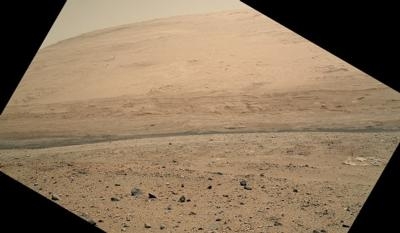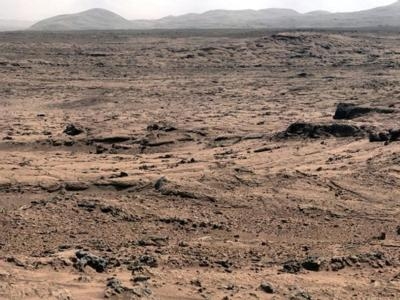Florida State University Researcher Finds Evidence Of Climate Change
Was Mars — now a cold, dry place — once a warm, wet planet that sustained life? And if so, how long has it been cold and dry?

Research underway at the National High Magnetic Field Laboratory may one day answer those questions — and perhaps even help pave the way for future colonization of the Red Planet. By analyzing the chemical clues locked inside an ancient Martian meteorite known as Black Beauty, Florida State University Professor Munir Humayun and an international research team are revealing the story of Mars’ ancient, and sometimes startling, climate history.
The team’s most recent finding of a dramatic climate change appeared in Nature Geoscience, in the paper “Record of the ancient Martian hydrosphere and atmosphere preserved in zircon from a Martian meteorite.”
The scientists found evidence for the climate shift in minerals called zircons embedded inside the dark, glossy meteorite. Zircons, which are also abundant in the Earth’s crust, form when lava cools. Among their intriguing properties, Humayun says, is that “they stick around forever.”
“When you find a zircon, it’s like finding a watch,” Humayun said. “A zircon begins keeping track of time from the moment it’s born.”
Last year, Humayun’s team correctly determined that the zircons in its Black Beauty sample were an astonishing 4.4 billion years old. That means, Humayun says, it formed during the Red Planet’s infancy and during a time when the planet might have been able to sustain life.
“First we learned that, about 4.5 billion years ago, water was more abundant on Mars, and now we’ve learned that something dramatically changed that,” said Humayun, a professor of geochemistry. “Now we can conclude that the conditions that we see today on Mars, this dry Martian desert, must have persisted for at least the past 1.7 billion years. We know now that Mars has been dry for a very long time.”
The secret to Mars’ climate lies in the fact that zircons (ZrSiO4) contain oxygen, an element with three isotopes. Isotopes are atoms of the same element that have the same number of protons but a different number of neutrons — sort of like members of a family who share the same last name but have different first names.

On Mars, oxygen is distributed in the atmosphere (as carbon dioxide, molecular oxygen and ozone), in the hydrosphere (as water) and in rocks. In the thin, dry Martian atmosphere, the sun’s ultraviolet light causes unique shifts in the proportions in which the three isotopes of oxygen occur in the different atmospheric gases.
So when water vapor that has cycled through the Martian atmosphere condenses into the Martian soil, it can interact with and exchange oxygen isotopes with zircons in the soil, effectively writing a climate record into the rocks. A warm, wet Mars requires a dense atmosphere that filters out the ultraviolet light making the unique isotope shifts disappear.
In order to measure the proportions of the oxygen isotopes in the zircons, the team, led by scientist Alexander Nemchin, used a device called an ion microprobe. The instrument is in the NordSIMS facility at the Swedish Museum of Natural History, directed by team member Martin Whitehouse. Because of these precise measurements, said Humayun, “we now have an isotopic record of how the atmosphere changed, with dates on it.”
The Black Beauty meteorite Humayun’s team is studying was discovered in the Sahara Desert in 2011. It’s also known as NWA 7533, which stands for Northwest Africa, the location where it was found.
In all, more than five pieces of Black Beauty were found by Bedouin tribesmen, who make a living scouring the Sahara for meteorites and fossils that they can sell. The zircons analyzed by Humayun’s team were from Black Beauty samples kept in Paris.
(Mars images provided by NASA)
 ANN's Daily Aero-Term (04.24.24): Runway Lead-in Light System
ANN's Daily Aero-Term (04.24.24): Runway Lead-in Light System ANN's Daily Aero-Linx (04.24.24)
ANN's Daily Aero-Linx (04.24.24) Aero-FAQ: Dave Juwel's Aviation Marketing Stories -- ITBOA BNITBOB
Aero-FAQ: Dave Juwel's Aviation Marketing Stories -- ITBOA BNITBOB Classic Aero-TV: Best Seat in The House -- 'Inside' The AeroShell Aerobatic Team
Classic Aero-TV: Best Seat in The House -- 'Inside' The AeroShell Aerobatic Team Airborne Affordable Flyers 04.18.24: CarbonCub UL, Fisher, Affordable Flyer Expo
Airborne Affordable Flyers 04.18.24: CarbonCub UL, Fisher, Affordable Flyer Expo




